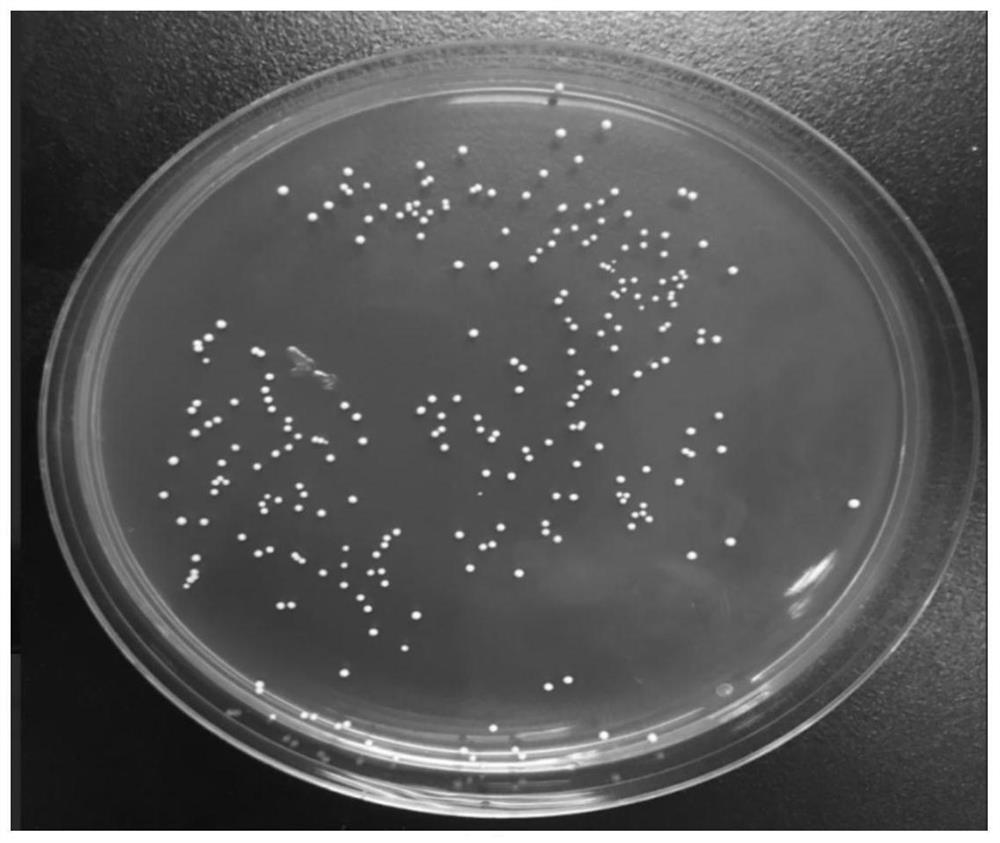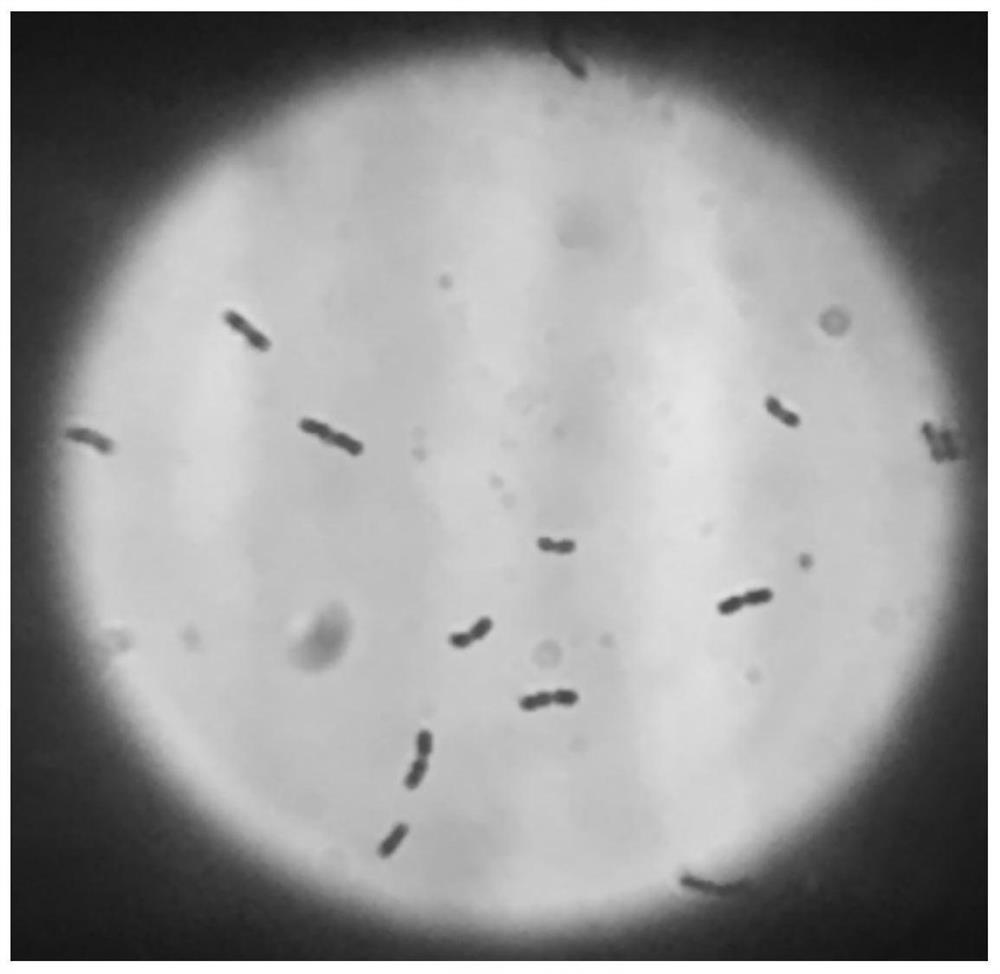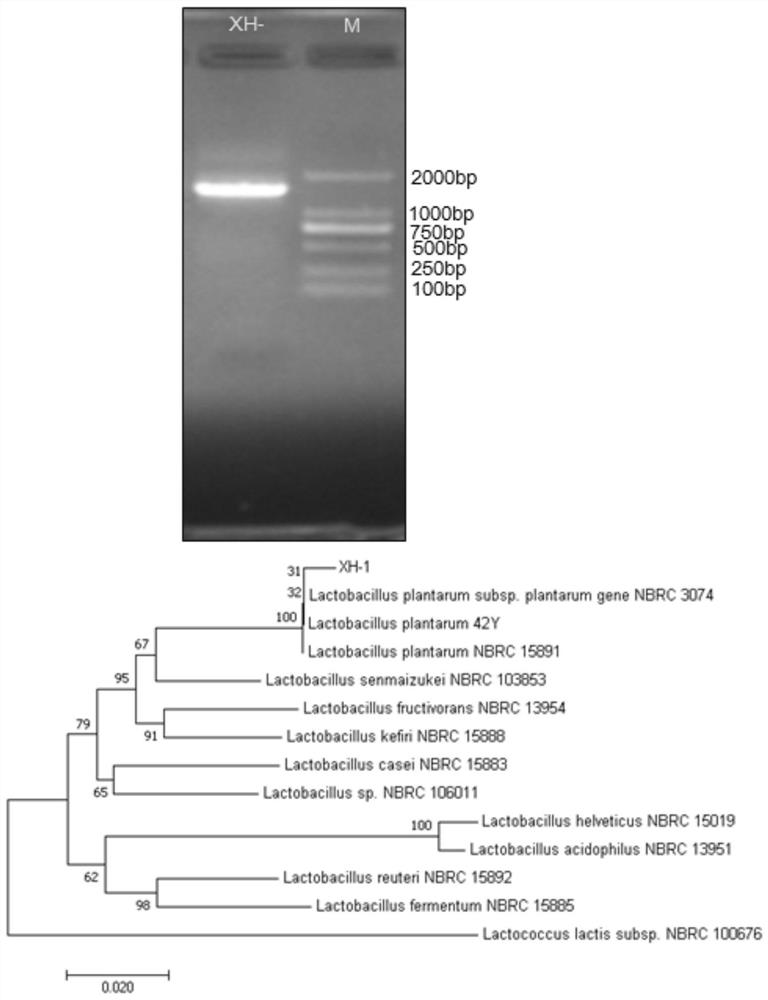An ethanol-tolerant Lactobacillus plantarum and its application in fermented food
A technology of Lactobacillus plantarum and ethanol resistance, applied in the field of microorganisms, can solve the problems that lactic acid bacteria are not suitable for high ethanol alcohol fermentation process, etc., and achieve the effect of improving sensory quality, controllable production process and simple operation
- Summary
- Abstract
- Description
- Claims
- Application Information
AI Technical Summary
Problems solved by technology
Method used
Image
Examples
Embodiment 1
[0024] Example 1: Obtaining of ethanol-resistant and high-yielding γ-aminobutyric acid Lactobacillus plantarum XH-1 and Lactobacillus plantarum F of the present invention
[0025] Weigh 10g of wine mash and add them into conical flasks filled with 90mL of sterile water, add sterilized glass beads, shake fully on a vortex shaker for 10min, so that the wine mash is fully dispersed. The supernatant was subjected to a 10-fold serial dilution, and the dilution was 10 -3 、10 -4 、10 -5 、10 -6 、10 -7 , use a pipette gun to draw 0.5mL sample solution, and use the plate coating method to evenly spread the sample solution on the MRS screening medium with different ethanol concentrations, and place the prepared plate upside down in a constant temperature incubator at 36°C for 5 days. Observe and record the characteristic morphology of the colony. Pick the bacterial strains that can grow well on the medium with 12% and 17% ethanol additions and isolate a single colony through multiple...
Embodiment 2
[0026] Example 2: Comparison of ethanol-resistant and high-yielding γ-aminobutyric acid Lactobacillus plantarum XH-1 and Lactobacillus plantarum F in the MRS system with different concentrations of ethanol
[0027] from Figure 4 It can be seen that the OD600nm of Lactobacillus plantarum XH-1 reached 4.42 in the MRS liquid medium added with 15% ethanol, and the OD600nm reached 3.82 under 17% ethanol, and grew well. However, the OD600nm of Lactobacillus plantarum F was only 0.21 and 0.18 under the MRS liquid medium added with 15% and 17% ethanol, and the growth was severely inhibited by high concentration of ethanol, and basically could not grow out.
Embodiment 3
[0028] Example 3: 16S rRNA identification experiment of Lactobacillus plantarum XH-1 with ethanol resistance and high γ-aminobutyric acid production in the present invention
[0029] The 16S rDNA gene method was used to identify the isolated and screened bacteria in molecular biology. According to the highly conserved 16S rDNA gene sequence of prokaryotic organisms, universal primers are designed, and the 16S rDNA gene fragment of the bacteria is amplified using the DNA of the isolate as a template, and the 16S rDNA gene sequence of the isolate is determined, which is homologous to the gene sequence in GenBank Sexual comparison, in order to determine the species of isolates.
[0030] The whole genome DNA of Lactobacillus plantarum XH-1 (Lactobacillus plantarum XH-1) was extracted with bacterial genomic DNA rapid extraction kit, and PCR amplification was carried out with bacterial 16S rDNA universal primers. PCR amplification system (25 μL): 10×PCR Buffer 2.5μL, 25mM MgCl2 2μL...
PUM
 Login to View More
Login to View More Abstract
Description
Claims
Application Information
 Login to View More
Login to View More - Generate Ideas
- Intellectual Property
- Life Sciences
- Materials
- Tech Scout
- Unparalleled Data Quality
- Higher Quality Content
- 60% Fewer Hallucinations
Browse by: Latest US Patents, China's latest patents, Technical Efficacy Thesaurus, Application Domain, Technology Topic, Popular Technical Reports.
© 2025 PatSnap. All rights reserved.Legal|Privacy policy|Modern Slavery Act Transparency Statement|Sitemap|About US| Contact US: help@patsnap.com



